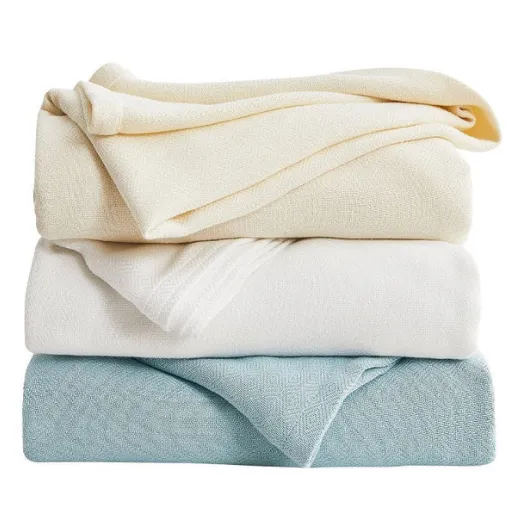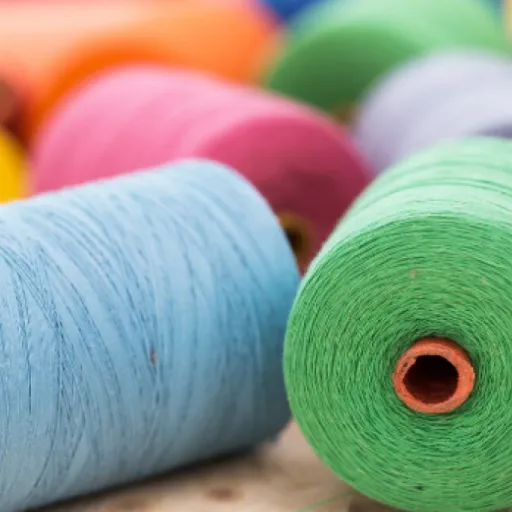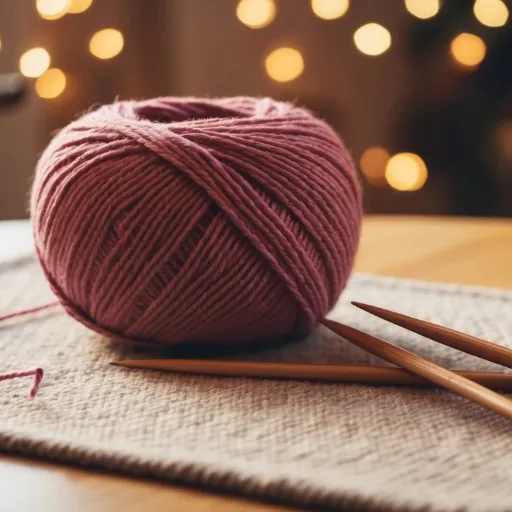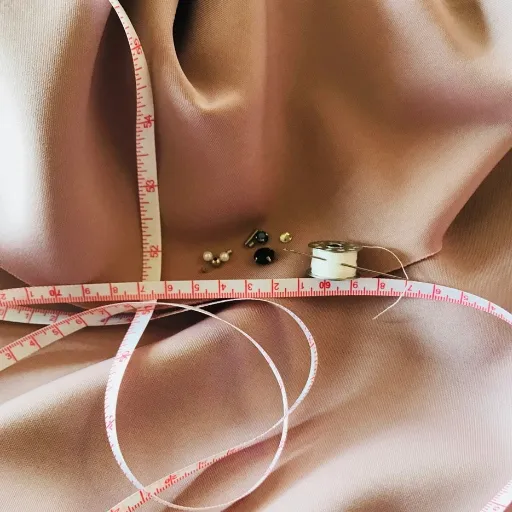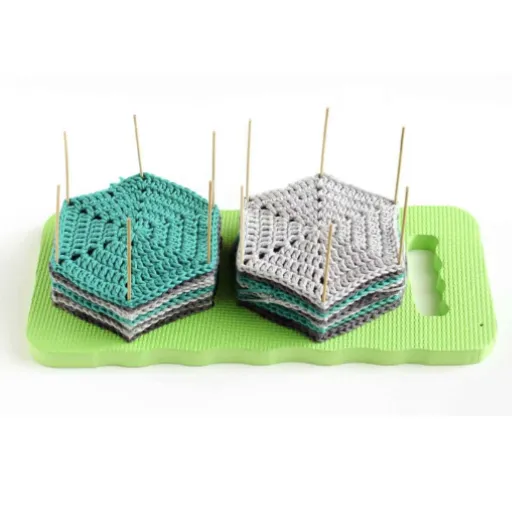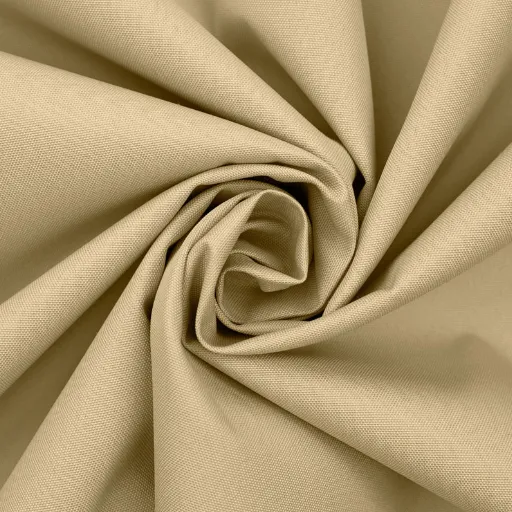Questions about the care needed for a yarn selected have always been a matter of concern in the world of knitting and crocheting. Acrylic yarn, considered the most versatile, is a favorite among both beginners and seasoned creators due to its affordability and immense color variety. But what if the times come to wash that cherished creation? Is acrylic yarn truly as durable and easy-care as many people claim? This guide will tell you all. Tips on washing acrylic are provided here, and maintaining the softness and brightness of your work is also discussed to give you the confidence to work freely.
Understanding Acrylic Yarn
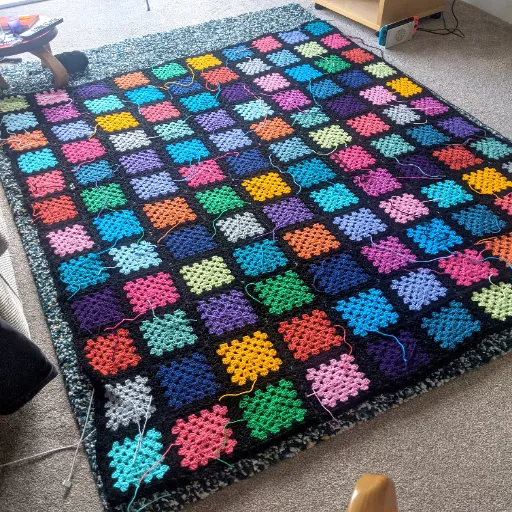
According to a newly formed decision, acrylic yarn is a synthetic fiber made from polymers; it is primarily designed to mimic the wool-like feel while retaining impressions of lightweight, durability, and affordability. It is versatile and cherished for its bright colors and its inherent ability not to shrink, or, optionally, to resist color fading. Keeping almost all items, Acrylic Yarn is usable in the washing machine; hence, it suits everyday use, such as blankets, scarves, sweaters, and so on. However, due to the synthetic materials, it may pill after some time with use; therefore, careful maintenance is necessary to keep up the look and feel. As a matter of principle, follow the washing instructions given on the label.
What is Acrylic Yarn?
Originating from synthetic polymers, acrylic yarn is a human-made fiber, with acrylonitrile often serving as the raw material, forming the basis of the polymer through chemical synthesis. It emerged as a cheaper alternative to natural fibers, such as wool. It is very lightweight with a soft texture and feels warm. Acrylic feels like wool and works wonders in crafting, knitting, and crocheting. Affordable and available in almost every color and texture imaginable, it is cherished by every crafting enthusiast, from beginner to pro. Long-lasting qualities and resistance to moth damage remain attractive. Although acrylic may perform well and be easy to maintain, it is not the best choice for projects that require the highest level of absorption, as it is less breathable compared to natural fibers.
Common Uses of Acrylic Yarn
Warm Accessories
Sweaters, scarves, and hats that require easy maintenance
Home Décor
Soft and sturdy blankets for cozy home environments
Toys & Crafts
Amigurumi and crocheted toys with vibrant colors
Due to its practicality and versatility, acrylic yarn is often chosen for crafting items and knitting projects in the medical field. It ranks high in the blanket-making industry for soft and sturdy home décor. Additionally, it is used for amigurumi and various crocheted toys due to its stable yarn form and vibrant color palette. It is a good choice because it is very affordable and suitable for experimentation, particularly when beginners are practicing new stitches or working on larger projects. Aside from the standard crafts, an endless collection of acrylic yarn-based creative DIY projects is evolving, so wall hangings can be transformed into handbags, practically proving that they can be adapted for nearly any knitted or crocheted project.
Benefits of Acrylic Yarn
- ✓Durability: Holds up well and does not wear out easily, withstanding frequent use and washing
- ✓Lightweight & Warm: Provides substantial warmth while remaining incredibly lightweight
- ✓Hypoallergenic: 100% hypoallergenic, supporting individuals with wool allergies or skin sensitivity
- ✓Versatile: Available in various textures and thicknesses for nearly all types of crafts
- ✓Affordable: Inexpensive and readily available for both beginners and seasoned artists
Washing Acrylic Yarn
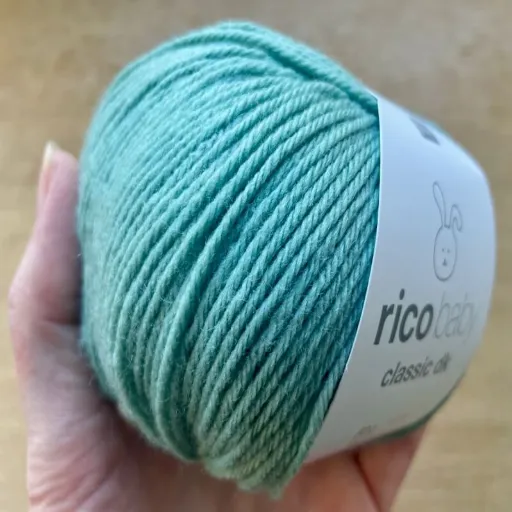
The tricky thing with acrylic yarn is handling it with proper care and washing it. It has a gentle wash with either cold or warm water to maintain the fibers’ integrity. The use of high heat is not recommended as it might ruin the delicate shape and texture of the yarn. For best results, lay the articles flat to dry, if possible. It would be the next best option to tumble dry. If a low setting and tumble dry are rated safe on the yarn label, go for it. Always check the washing instructions provided by the yarn manufacturer.
Is Acrylic Yarn Machine Washable?
Being machine washable, many pride themselves on acrylic yarn, which is used to make everyday items such as blankets, sweaters, and scarves. Most acrylic yarns are said to be washed in washing machines on gentle or delicate cycles in cold or warm water, according to the most recent information available. It is, however, advisable to follow instructions on a yarn label whenever available, as specific specialty blends or treatments may often require additional handling. Keep in mind that to avoid damaging the yarn, never use high heat when washing or drying; instead, lay the item flat and air-dry whenever possible.
Hand Washing Acrylic Yarn: Tips and Techniques
- Fill a basin or sink with lukewarm water and a few drops of gentle detergent or soap for delicate fabrics
- Submerge the item and gently swirl it in the water to loosen dirt and oils
- Avoid rubbing or wringing, as this could stretch the fibers or alter their shape
- Rinse thoroughly in cool water to remove all traces of soap
- Gently squeeze out excess water without twisting, and lay the item flat on a clean towel to air dry
Proper hand washing not only cleans the yarn but also helps preserve its texture and durability over time.
Drying Recommendations for Acrylic Yarn
| Drying Method | Recommendation | Benefits |
|---|---|---|
| Air Drying | Lie flat on a clean towel | Minimizes wear and tear |
| Machine Drying | Low or medium heat settings | Time-efficient option |
| Avoid | Hanging while wet | Prevents unwanted stretching |
Once your acrylic yarn has come out of the wash, give it some tender loving care while drying to maintain its good condition and well-structured appearance. Unlike natural fibers, acrylic is quite forgiving and can be dried in the dryer on low or medium heat settings; however, air drying is always recommended to minimize wear and tear. The yarn or finished project should be laid flat over a clean, dry towel, ideally in a well-ventilated area, as specific alterations to shape may become necessary. Yarn hanging should be discouraged because it may cause unwanted stretching. Then again, if time is a factor, you’re probably better off throwing it into the dryer, but remember to select either the delicate or tumble dry low option to lower heat exposure. Keep your acrylic vibrant and soft by ensuring it maintains its quality and lasts for a long time by drying it properly.
Acrylic Yarn vs Other Yarn Types
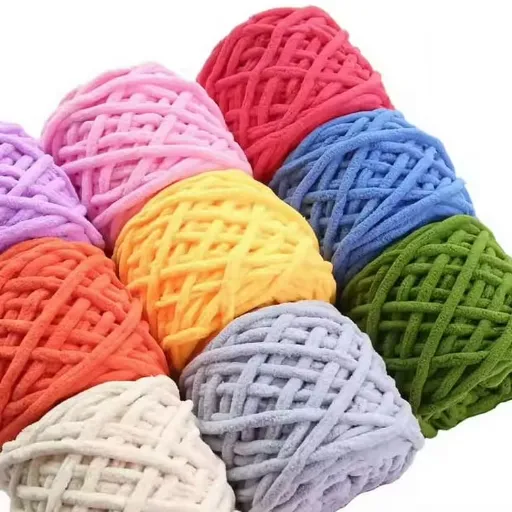
Acrylic yarn, which is much more affordable than natural fibers and resilient against wear and tear, stands out among acrylics for the myriad vibrant colors it offers, and thus finds its way into the arms of many beginner and economically conscious crafters. Unlike natural fibers like wool and cotton, acrylics shrink less and are more resistant to pests such as moths. But they are less breathable than natural yarns and may therefore prove uncomfortable for some garments or accessories. Wool is obviously warmer and more elastic, while cotton is fabulously breathable. In contrast, acrylic is lighter, easier to care for, and adaptable to a wide range of projects. Inherent factors distinguish each type of yarn; what matters is the individual needs of your project.
Comparison with Natural Fibers
Acrylic Yarn
- Cost: Affordable
- Durability: High
- Care: Machine washable
- Environmental: Petroleum-derived
Natural Fibers
- Cost: Higher price
- Properties: Better insulation/breathability
- Care: May require special handling
- Environmental: Biodegradable
In comparison, cost, durability, and environmental impact are factors to consider when pitting acrylic yarn against natural fibers such as wool, cotton, or silk. Acrylic yarn is often more affordable and widely available, making it a popular choice for beginners or those on a tight budget. However, natural fiber such as wool excels more in insulation and moisture-wicking properties, whereas cotton is truly breathable and comfortable, particularly for warmer projects.
Environmentally, natural fibers are biodegradable, whereas acrylic yarn, being synthetic, is derived from petroleum. This foremost difference has triggered the urge for crafts to go into sustainable realms. In essence, one’s choice between acrylic yarn and natural fibers depends on the project’s requirements and personal values regarding price, functionality, and sustainability.
Expert Insights on Yarn Choices
Which type of yarn is best for beginners? According to experts and recent trends, medium-weight yarns, such as worsted-weight yarns, are recommended for a good start. This yarn is suitable for larger projects and is delicate to work with. Acrylic yarn is commonly chosen by beginners due to its affordability, durability, and ease of use, which allows them to develop their skills in tension and stitch methods gradually. Cotton yarn, on the other hand, offers a sustainable alternative and should be equally forgiving for beginners, as it provides a soft feel and almost no stretch. Finally, the advice remains the same for beginners: choose an easy yarn that corresponds with your project and allows you to practice comfortably until your skills develop with confidence.
Caring for Acrylic Yarn
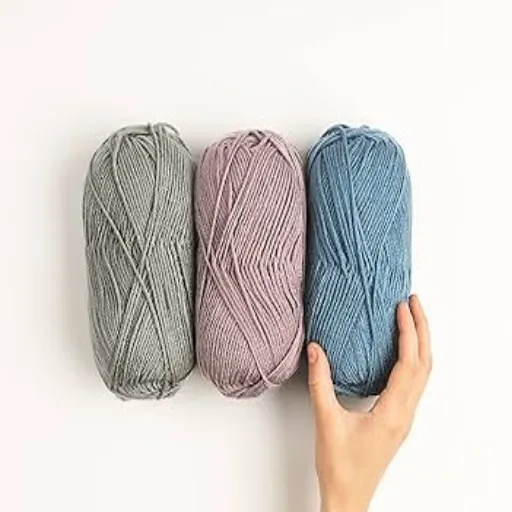
Less heat, more care is understood in acrylic yarns. The following simple guidelines will help keep it in method:
Washing
Most acrylic yarns can be washed in the washing machine on a gentle cycle, using either cold or warm water. Kindly check the yarn label for any specific care instructions.
Drying
Drying acrylic does wonders through the air. If you decide to put it in the dryer, use the lowest heat setting or the air tumble-dry option.
Storage
Store acrylic items in a cool, dry place, away from direct sunlight, to prevent color fading or fiber weakening.
Avoid Heat
Acrylic yarn melts or deforms at high temperatures. Therefore, never keep it under such high temperatures during washing, drying, or ironing.
Pre-Wash Tests for Acrylic Yarn
Before washing an acrylic yarn project, it is essential to conduct a pre-wash test to determine if the fibers will behave well with your chosen cleaning method. To do this, take a small swatch of the same yarn and put it through the washing process. Then, notice if any trouble arises, such as peculiar color bleeding, shrinking, or texture changes. It is a way of observing how the yarn responds to water and detergent, and, if necessary, allows you to modify the washing method. Ensuring that the yarn is evaluated correctly before washing will allow the finished projects to retain their good quality and integrity.
Storage Advice for Acrylic Yarn Items
When storing acrylic yarn, I ensure it is dry and free of mold or mildew. I fold them neatly and place them in either an airtight container or zippered plastic bags to protect them from dust, moisture, and pests. Keeping them cool and dry in direct sunlight ensures that the colors stay bright and the material remains in good condition.
Using Fabric Softeners with Acrylic Yarn
Among crafters, the topic of whether to use fabric softeners on acrylic yarn can be a source of controversy. Fabric softeners provide a pleasant fragrance and help reduce static cling in synthetic fibers; however, they may also leave a glossy residue on acrylic. Try diluting the fabric softener with water to reduce buildup, and never use it on the entire project without first testing it on a small, inconspicuous area. Another method to soften items made of acrylic yarn closely involves washing with mild detergent and adding vinegar to the rinse cycle. It is crucial to keep in mind the information provided on the yarn label for its best upkeep.
Practical Advice for Knitters and Crocheters
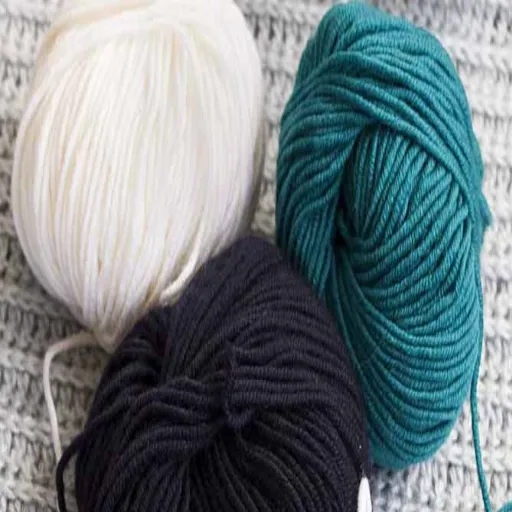
- 1Choose the Right Yarn for Your Project: Consider the intended use of your finished product. For items that will be worn, soft and comfortable yarn is recommended; durable yarn is used for items like bags or rugs.
- 2Understand Yarn Care Requirements: Refer to the yarn label for specific care instructions. Some synthetic yarns, such as acrylic, can be machine-washed, while others may require gentle hand washing.
- 3Experiment with Tension: Tensioning is a technique that helps achieve a nice, professional look for any project.
- 4Invest in Quality Tools: Good needles or hooks make your craft smoother and enjoyable.
- 5Start with Simple Patterns: If you are a beginner at knitting or crocheting, use easy patterns to help you gain confidence and develop your skills.
- 6Store Yarn Properly: Store your yarn in a dry and clean place to keep it free from dust and damage. Storage containers or bags can prevent tangling.
Best Projects for Acrylic Yarn
The versatility of acrylic yarn is almost ideally suited for any project you want to try. Durable, cheap, and available in colors aplenty, here are some of the best uses for acrylic yarn:
🛏️ Blankets and Afghans
Acrylic yarn makes an ideal material for soft and warm blankets. It is washable and therefore perfect for everyday use and family settings.
🧣 Hats and Scarves
Soft acrylic yarn is fantastic for winter accessories like hats, scarves, and ear warmers that demonstrate its warmth.
🧸 Amigurumi
This synthetic yarn is excellent for making stuffed toys and amigurumi figures because it holds shapes well and is available in a wide array of bright colors.
👕 Sweaters and Cardigans
With acrylic yarn, you can create an inexpensive yet comfortable and stylish alternative with high resistance to frequent washing.
🏠 Home Decor Items
Think throw pillows, table runners, or wall hangings-acrylic yarn can infuse your living space with vibrant, customizable designs.
Caring Kits for Acrylic Yarn Maintenance
Properly maintaining acrylic yarn ensures the intended brightness of the works and extends their lifespan. A caring kit for acrylic yarn should have all of the following items:
🧼 Mild Detergent
Select a mild detergent that protects fibers to wash the acrylic yarn projects without fading or damaging them. Never use strong chemicals like bleach.
🥅 Mesh Laundry Bags
Use a mesh laundry bag when washing in the machine to prevent items from tangling or stretching during the washing process.
🪄 Soft Brushes or Combs
They help smooth out any minor pilling or fluff on the finished items while keeping the yarn intact.
📦 Storage Bags
Filled with acrylic yarn, storage bags or bins protect against dust, moisture hazards, and pests.
Reference Sources
These three references of a professional and authoritative nature may be used to confirm the correctness of your article on “Is acrylic yarn washable?” They are academic and give insight into the properties and care of acrylic yarn:
📚 Serviceability and Washing Durability of Recycled Polyester, Wool, and Acrylic
This research examines the washing performance and durability of acrylic and other fibers, providing insights into their performance under various working conditions.
📚 Acrylic Fabrics as a Source of Microplastics from Portable Washer and Dryer
This study investigates the effects of washing and drying on acrylic fabrics, offering valuable insights into the behavior of acrylic yarn during care processes.
📚 A Research on Yarn and Fabric Characteristics of Acrylic/Wool/Angora Blends
This paper concerns characteristics of acrylic yarn blends and their wash and no-wash behavior that pertain to your area of interest.
Frequently Asked Questions (FAQs)
❓ Is acrylic yarn machine washable?
Acrylic yarns are machine washable, making them a popular choice for many knitters and crocheters. You can wash acrylic garments using a gentle cycle with cold or lukewarm water, which helps maintain their shape and color.
❓ How do I care for items made with acrylic yarn?
Caring for items made with acrylic yarn is easy. You can machine wash them with a mild detergent and dry them on a low or no-heat setting. This ease of care makes acrylic yarn a favorite for both beginners and experienced knitters.
❓ Can I dry clean acrylic yarn garments?
While acrylic is resistant to mold and less breathable than natural fibers, it is generally not recommended to dry-clean acrylic garments. Instead, machine washing and air drying are recommended to keep your acrylic yarn projects looking their best.
❓ What are the benefits of using acrylic fibers?
Acrylic fibers provide warmth and softness while also being lightweight and durable. They are often less expensive than natural fibers like cotton or wool, making them a budget-friendly option for a wide range of colors and projects.
❓ How should I wash my acrylic yarn projects?
To wash your acrylic yarn projects, it’s best to use a gentle cycle with cold or lukewarm water. This method ensures that the yarn maintains its integrity and does not shrink or lose its shape.
❓ Is acrylic yarn easy to care for?
Yes, acrylic yarn is known for its low-maintenance qualities. It’s easy to care for, and regular washing can be done without worry, making it ideal for everyday items.
❓ Will washing acrylic yarn affect its color?
Washing acrylic yarn should not significantly affect its color, especially if you follow the care instructions. However, it is advisable to wash vibrant colors separately to prevent any potential bleeding.
❓ Can I use fabric softener on acrylic yarn?
While you can use fabric softener on acrylic yarn, it’s best to avoid it if you want to keep the yarn’s original texture and properties. Instead, simply washing with a mild detergent should suffice.
❓ Does acrylic yarn absorb water?
Acrylic yarn does absorb some water, but it dries quickly compared to natural fibers. This characteristic makes it ideal for items that require frequent washing, such as blankets and clothing.








